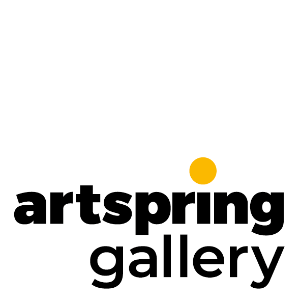By Caroline Fraser
Lithographs, intaglio prints, woodcuts, monoprints... so many words and so many processes.
I don't know about you, but I am quite ignorant when it comes to understanding the differing ways that prints are made.
I have therefore been doing some research. As a photographer who dabbles in mono-printing I have a lot to learn, and I will try to share with you some of the secrets that I have uncovered while trying to understand the different ways in which prints can be made.
So here we go......
Pressure
Firstly, all types of print require pressure of ink onto the intended surface; normally paper. For some methods a printing press is needed to squeeze the ink/paint out of the prepared plate onto the paper. For others, hand pressure is all that is required.
Those that can be created with hand pressure alone include wood cuts, lino-prints, screen-prints, monotypes and mono-prints.
I have already talked about the screen printing process in a previous article, so will leave this for today.
Wood cut prints
Also known as wood block printing, this method involves carving an image from a block of wood. The method originated in the 12th century, for printing fabric, and later onto paper for books and manuscripts, usually with a press.
Famous artists using this process include the Japanese artist Hokusai, probably best known for his print series 'The Thirty-six Views of Mount Fuji' including "The Great Wave off the Coast of Kanagawa".

Thirty-six Views of Mount Fuji: The Great Wave off the Coast of Kanagawa, woodblock print, Katsushika Hokusai, about 1831, Japan. Museum no. E.4823-191, © Victoria and Albert Museum, London
To see how this type of print is produced watch the video below; it highlights the painstaking process of working each layer of colour onto a separate wood block.
Eric Ravilious, ( 1903-1943) a Sussex based artist worked as a painter and also made wood cut illustrations for many books.

Eric Ravilious | wood cut | poetry book illustration
Wood blocks are also used for traditional fabric printing and wallpapers.

Hand printing fabric with wood block

Original hand carved Morris & Co. pear-wood wallpaper printing block
Lino cut prints

Lino cutting tools
Lino cut is similar to wood cut, in that the linoleum sheet is carved away and then inked up to create the print. This can then be printed with or without a press.
Linoleum was initially patented as a floor covering in 1860, and only later adopted by printmakers as an alternative to wood block. The softness of the material makes it very suitable for DIY printmaking at home without a press.
To learn more about the process I enjoyed reading Anna Curtius' blog 'how to make a linocut without a press'. She includes some excellent short videos on the linocut process.
Famous artists using linocut include Edward Borden and Matisse.
This print of Brighton Pier by Edward Borden is so large ( 1.5 metres long) that Borden had to press it with his feet rather than use a press or a burnishing tool.

Brighton Pier | Edward Borden | a lino cut print
© the estate of Edward Bawden. Photo credit: Jerwood Collection

Primavera | lino cut | Henri Matisse |1938
Lino cut is very accessible; I remember trying it as a child and discovering how sharp the tools are when I found blood dripping from my hand. Luckily no serious harm was done.

Lino cutting equipment and art work | Andrea Lauren
Monotype
Unlike wood cut and linocut prints, a monotype, as the name suggests, is a one off print.
This immediately makes it more exclusive, as each print is unique.
Tate Modern defines a monotype as 'a unique image printed from a polished plate, such as glass or metal, which has been painted with a design'.

Figure 1956 | Monotype | Sir Anthony Caro 1924-2013

Bill Jacklin RA | Coney Island Untitled Monoprint, 1993
Ink or paint are applied to the plate, and then the paper is laid carefully over it and burnished ( rubbed) to transfer the paint to the paper.
Alternatively a press can be used. Stencils and collage are optional tools.
It is easy, and fun, to turn out a lot of prints in a very short space of time, but an expert may take hours preparing the plate before applying to paper.
I will leave you with a very zen video by artist Jane Morris Pack, demonstrating how her Iliad monotypes were made.
I find it quite astonishing to see how she works into a plate of black ink to create a unique and beautiful image.
Next time I will delve into printing processes that require a press.
And you thought this was complicated!
Hero image: Paris abducts Helen | Jane Morris Pack | monotype

